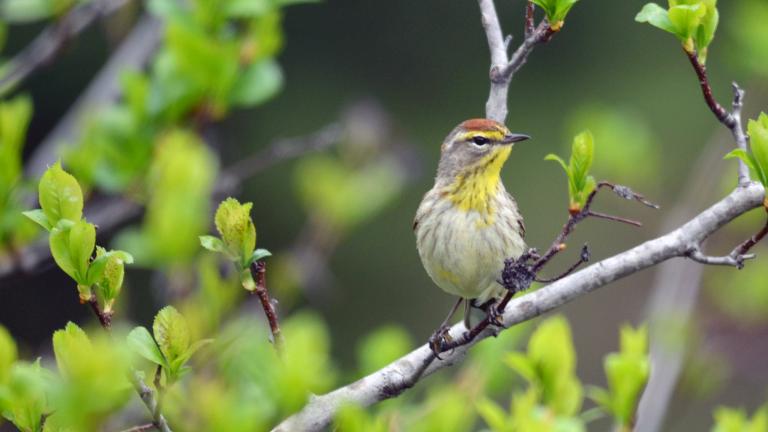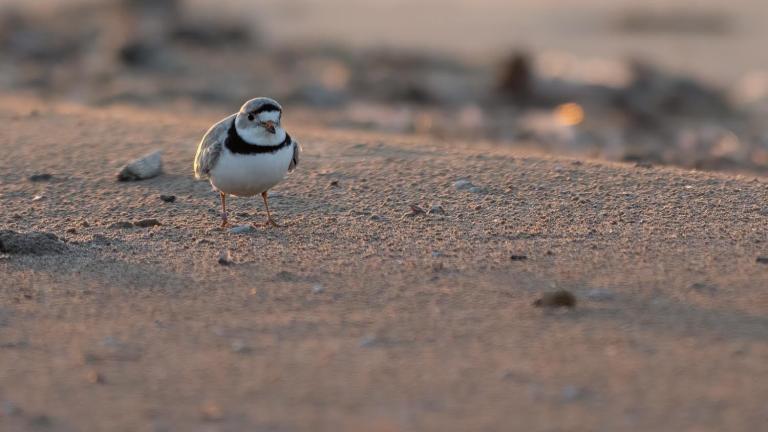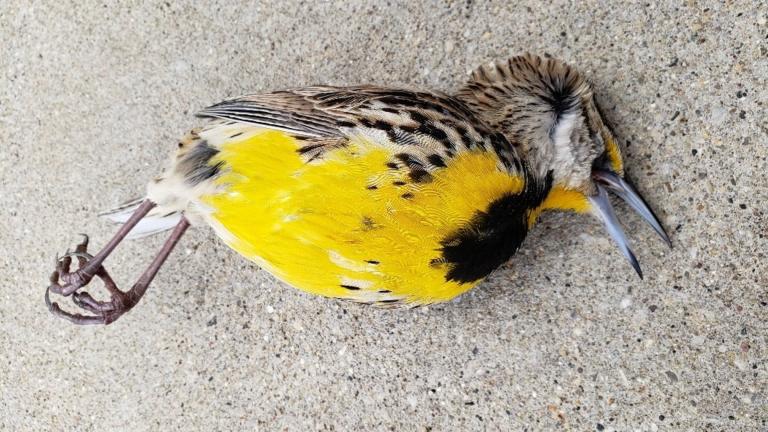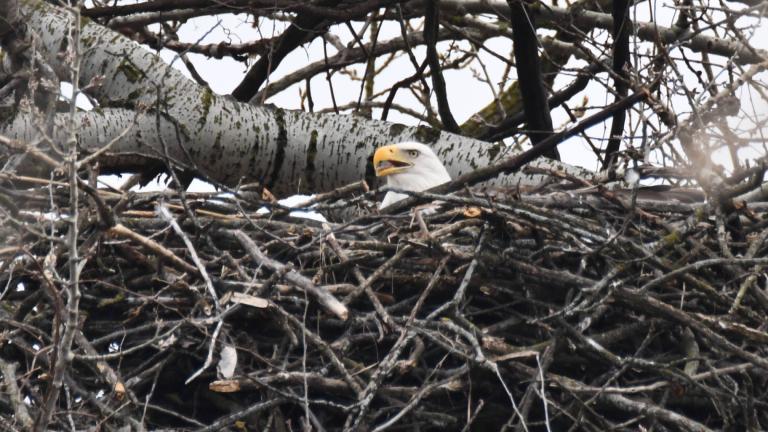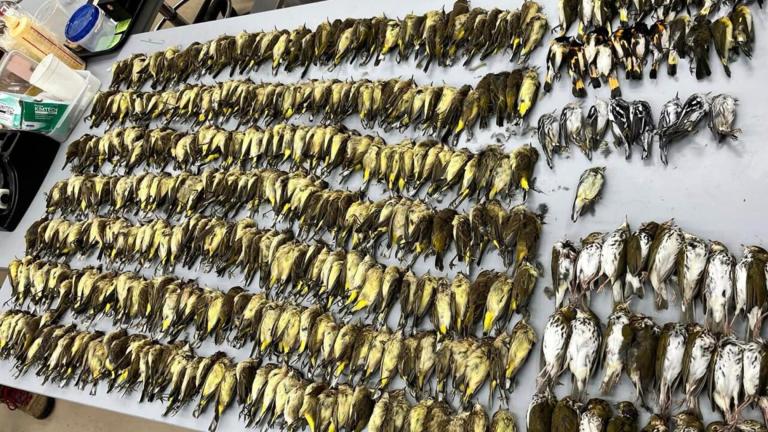 McCormick Place Lakeside Center's walls of glass and location on the lakefront are a deadly combination for birds. (Patty Wetli / WTTW News)
McCormick Place Lakeside Center's walls of glass and location on the lakefront are a deadly combination for birds. (Patty Wetli / WTTW News)
On Monday morning, Annette Prince rescued a dark-eyed junco from the pavement outside McCormick Place’s West Building, where the bird lay injured after crashing into the convention center’s glass.
The irony wasn’t lost on Prince, director of Chicago Bird Collision Monitors, who had arrived at the sprawling McCormick campus to speak out on behalf of birds during the monthly meeting of the center’s board of directors.
Prince was joined by Judy Pollock and Edward Warden, presidents of Chicago Bird Alliance and Chicago Ornithological Society, respectively, who urged the board to take action in the wake of a mass casualty event that occurred at the beginning of October, in which 1,000 birds fatally collided with McCormick’s lakefront Lakeside Center during a wave of migration activity.
Though the carnage made headlines across the globe and sparked international outcry, Chicago’s birding community has long been sounding the alarm about the outsized threat McCormick Place poses to birds.
“A thousand birds in one day is staggering, but no less sobering is the tens of thousands that have died here through the years,” Prince told board members. “Just as (McCormick Place) seeks to welcome visitors to Chicago from around the world, please implement the long overdue measures that will ensure that millions of invaluable and irreplaceable avian visitors that we host each year will have safer passages through our city.”
VIDEO: Annette Prince, director of Chicago Bird Collision Monitors, speaks to the Metropolitan Pier and Exposition Authority’s Board of Directors.
In the aftermath of the fatal incident, representatives from Chicago’s bird conservation organizations have met with the convention center’s leadership team to discuss mitigation options. Monday’s meeting offered an additional opportunity to address board members directly.
Pollock metaphorically delivered a petition with 10,000 signatures — opting to email rather than print out the mountain of paper — the impact of which she hoped would push the board to adopt bird-friendly measures sooner than later, specifically before spring migration in 2024.
The petition demands that interior lights at Lakeside Center be extinguished or shades drawn every night during seasonal migration. Buildings across the city comply with this Lights Out policy developed by Mayor Richard M. Daley’s Nature and Wildlife Committee, but McCormick Place consistently opts out, Pollock said, despite evidence showing that bird strikes are reduced by 80% when the center goes dark.
“This is an example where our city can make a huge difference for these birds. We really hope that ... by the time next March rolls around, we will see the problem solved,” Pollock said.
VIDEO: Judy Pollock, president of Chicago Bird Alliance, explains what makes McCormick Place so dangerous to birds.
McCormick Place should be riding the wave of positive press from the Wall Street Journal, which recently ranked the convention center second in the country, behind Las Vegas.
Instead, it’s been slammed by headlines labeling it a bird-killer.
Larita Clark, CEO of the Metropolitan Pier and Exposition Authority, which oversees McCormick Place, said her team took the issue seriously.
“I don’t want any death of any kind,” Clark said. “We’re going to do our part.”
In her own presentation to the board, Clark outlined some of Lakeside Center’s unique challenges, including walls of glass the equivalent of two football fields, and window blinds that have to be opened and closed manually, a time-consuming task that requires heavy equipment to manage.
Contrary to popular opinion, Lakeside Center is not vacant, Clark added. It hosted six events in October and will be in use all but eight days in November, she pointed out. And when it’s occupied, the lights need to be on for the safety of staff, clients and visitors, she said.
Since the shock of the mass casualty event, which Clark said was “devastating to me personally, and to our team,” the convention center is “researching the viability of the pricing” of bird-safe mitigations. These include the addition of bird-safe film on the outside of the glass; adding more shades and drapery inside, and motorized controls to existing drapery; installing barriers outside; and adding more window decals, she said.
The options “could be extremely costly,” Clark told the board, and her team “will attempt to identify” funding resources before bringing any solution to the board for approval.
In terms of timing, Clark said any such discussion was premature.
“It will need to be a part of our overall re-imagination process. However we are committed to making sure this issue is addressed through the renovation,” said Clark. “While our mission is economic development, we work hard to be good neighbors and good stewards of the environment.”
Jeffrey Bethke, chairman of the McPier board of directors, talks with bird advocates Annette Prince (center) and Judy Pollock. (Patty Wetli / WTTW News)
The proof will be in the pudding, conservationists say.
It remains a sticking point for Pollock that McCormick Place continues to tout its participation in Lights Out when that participation is highly conditional — only when the building isn’t in use.
“Why can’t they just do the right thing?” she asked.
Warden, of Chicago Ornithological Society, said that while he gives McCormick Place leadership credit for meeting with bird advocates after all these years, what he heard Monday were statements couched in caveats versus concrete next steps.
Now it’s a waiting game, said Warden.
“They have promised to keep us abreast. So we’ll give them space and see what they say,” he said.
But while McCormick Place may be the most egregious of Chicago’s bird-killing buildings, it’s hardly the only culprit.
“I hope this is putting the fear of god into other buildings,” Warden said.
It seems to be, according to Prince.
Her organization has been contacted by a number of building owners in recent weeks, all of them asking how to become more bird-friendly.
“I think it’s a start,” she said. “At least they’re thinking about it.”
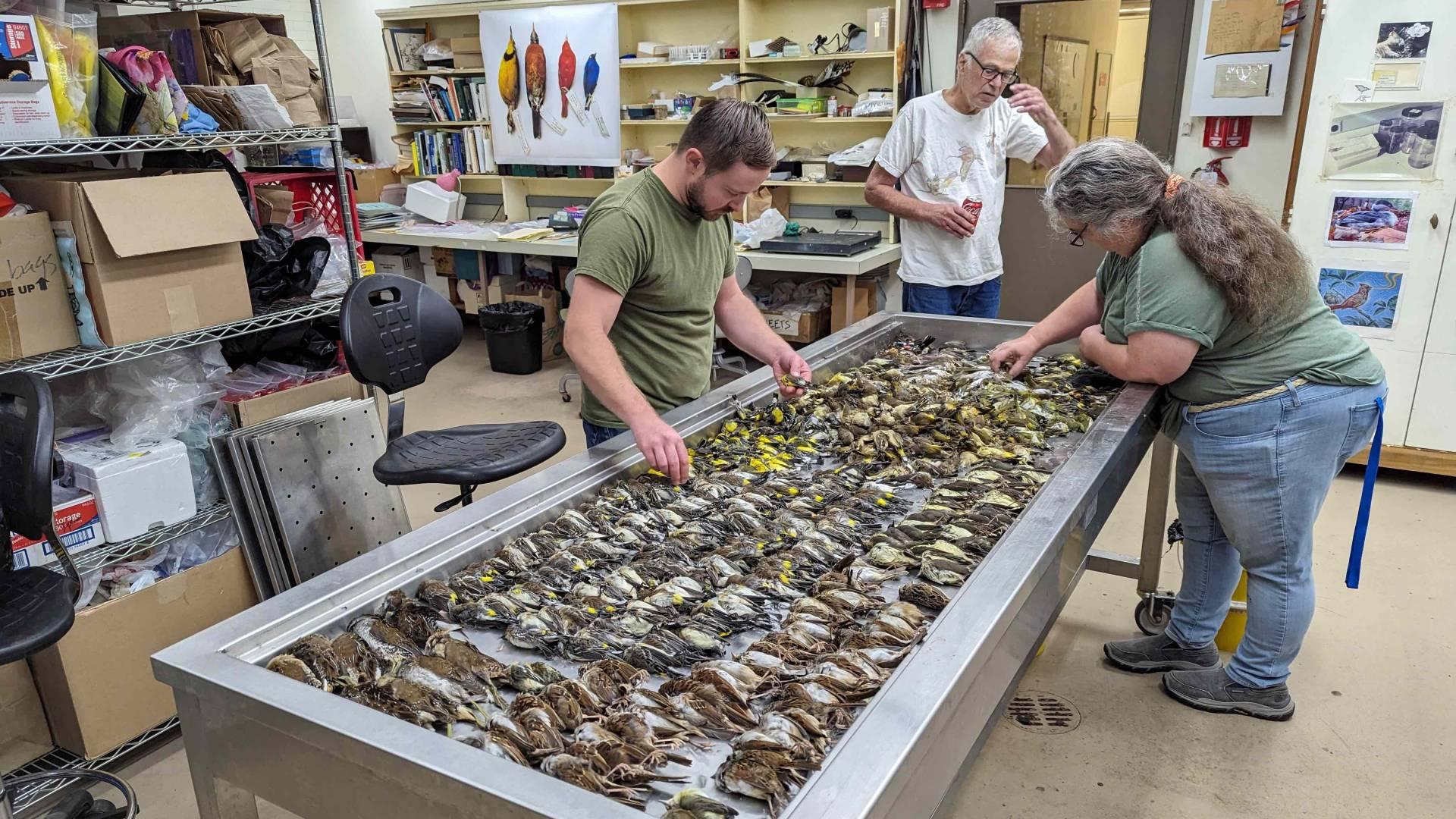 A team at the Field Museum processes birds killed in collisions with McCormick Place during a massive migratory wave Oct. 4-5, 2023. (Daryl Coldren / Field Museum)
A team at the Field Museum processes birds killed in collisions with McCormick Place during a massive migratory wave Oct. 4-5, 2023. (Daryl Coldren / Field Museum)
Bird conservationists are also seizing on the momentum generated by October’s tragedy to push the city to make good on its promise of issuing long-delayed bird-friendly building requirements by the end of the year.
Conversations are ongoing with the Department of Planning and Development, which was tasked with developing the guidelines back in 2020.
Movement on the guidelines languished under former commissioner Maurice Cox, who seemed detached from the issue of bird safety, to the point that Cox and former Mayor Lori Lightfoot encouraged Bally’s to add more glass to its planned riverfront casino, Prince said.
A thousand dead birds have changed the conversation though.
“This has certainly risen to a higher level of attention,” said Prince.
Contact Patty Wetli: @pattywetli | (773) 509-5623 | [email protected]

